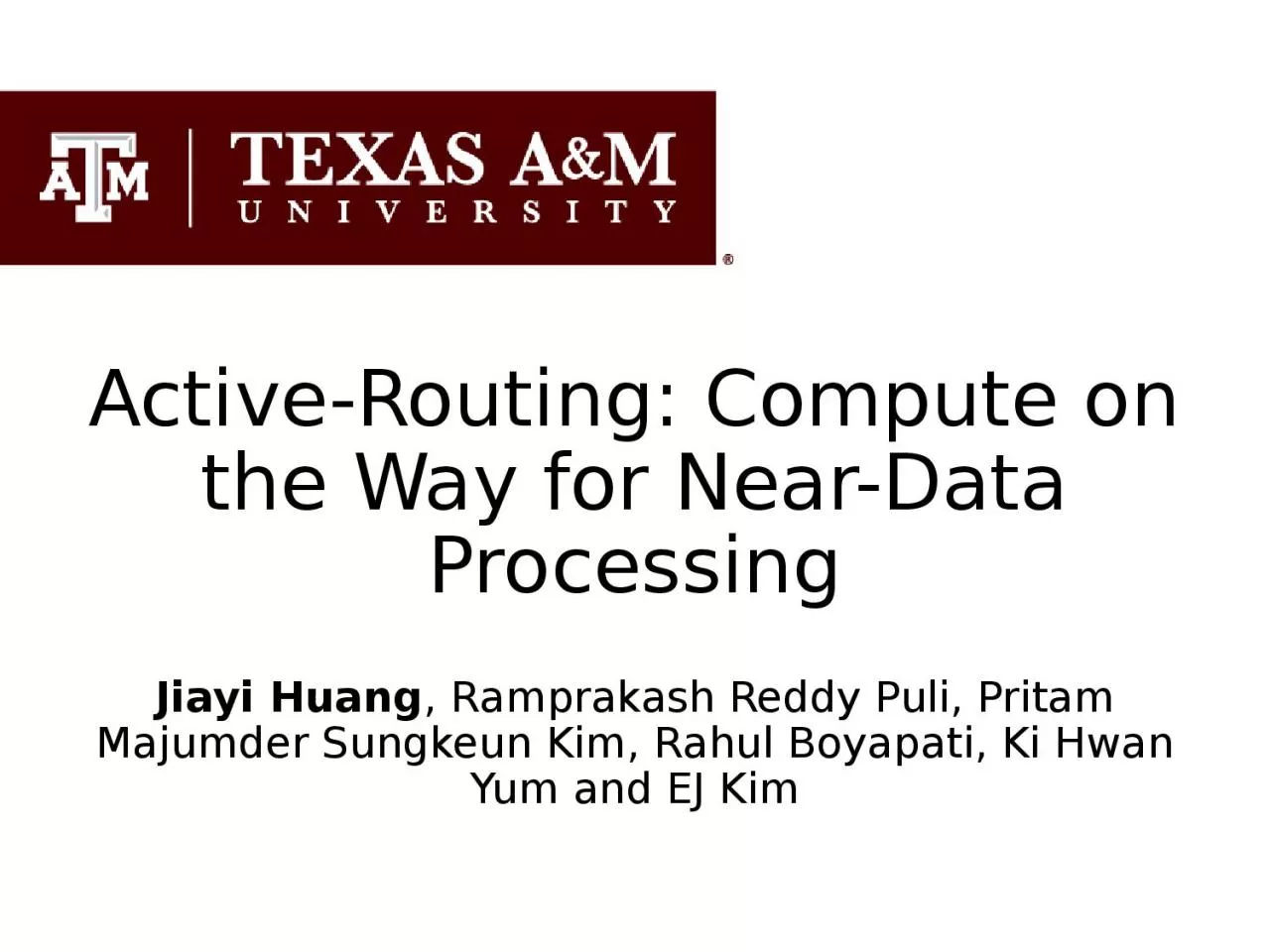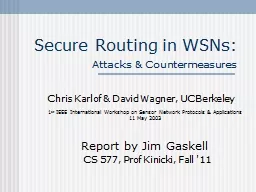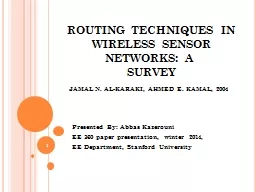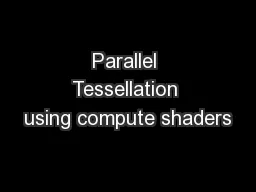PPT-Active-Routing: Compute on the Way for Near-Data Processing
Author : nonhurmer | Published Date : 2020-09-28
Jiayi Huang Ramprakash Reddy Puli Pritam Majumder Sungkeun Kim Rahul Boyapati Ki Hwan Yum and EJ Kim Outline Motivation ActiveRouting Architecture Implementation
Presentation Embed Code
Download Presentation
Download Presentation The PPT/PDF document "Active-Routing: Compute on the Way for N..." is the property of its rightful owner. Permission is granted to download and print the materials on this website for personal, non-commercial use only, and to display it on your personal computer provided you do not modify the materials and that you retain all copyright notices contained in the materials. By downloading content from our website, you accept the terms of this agreement.
Active-Routing: Compute on the Way for Near-Data Processing: Transcript
Download Rules Of Document
"Active-Routing: Compute on the Way for Near-Data Processing"The content belongs to its owner. You may download and print it for personal use, without modification, and keep all copyright notices. By downloading, you agree to these terms.
Related Documents














